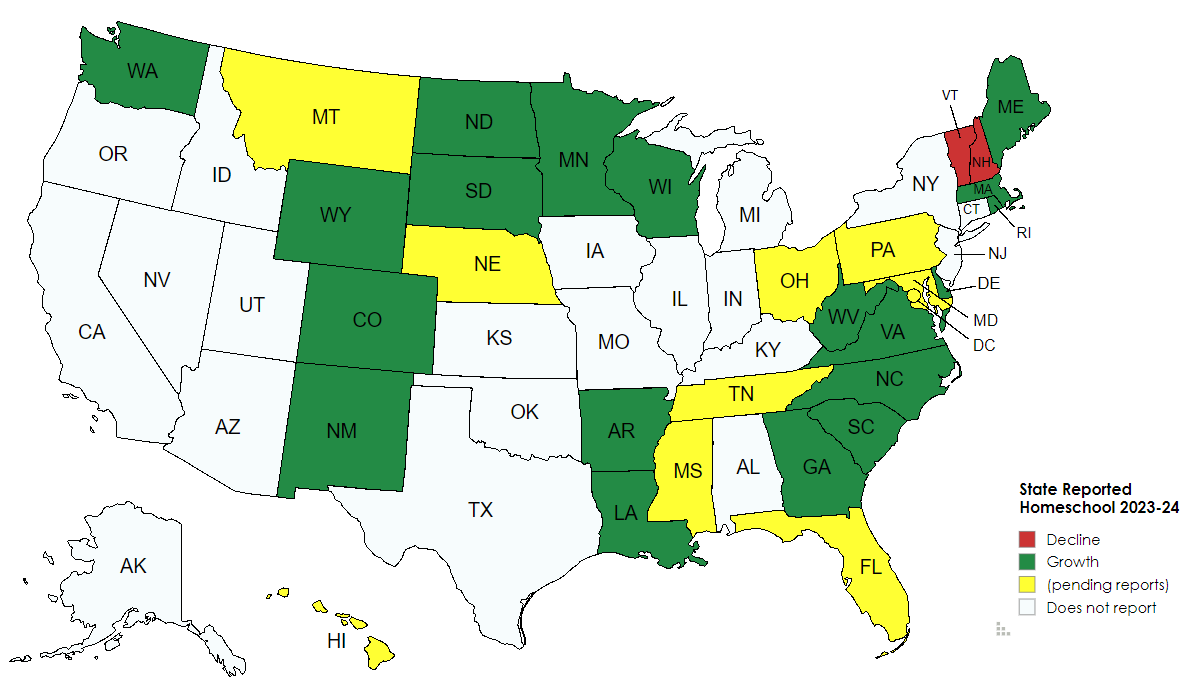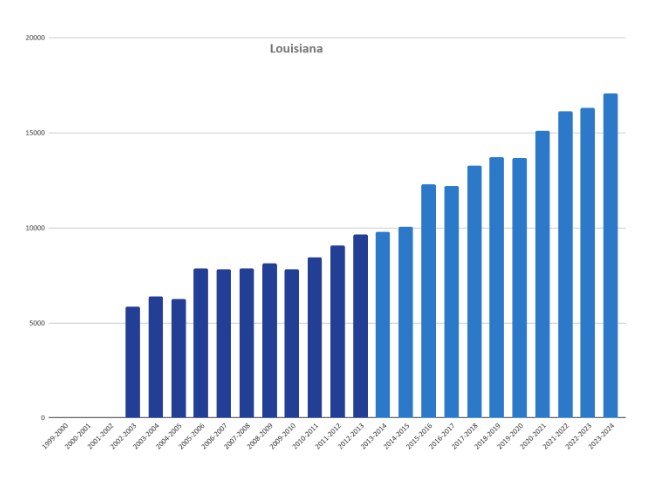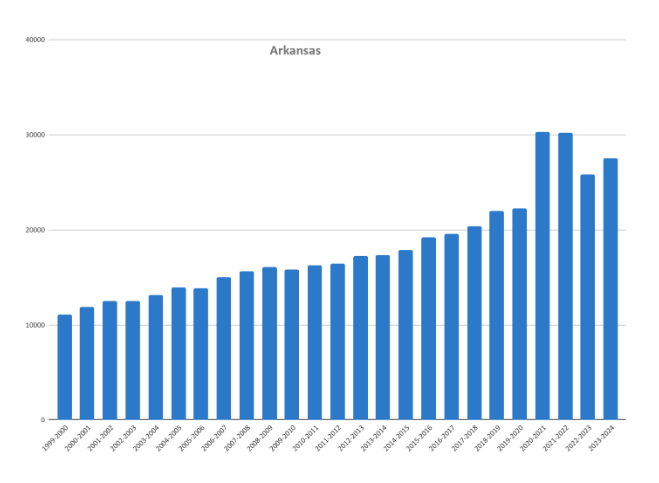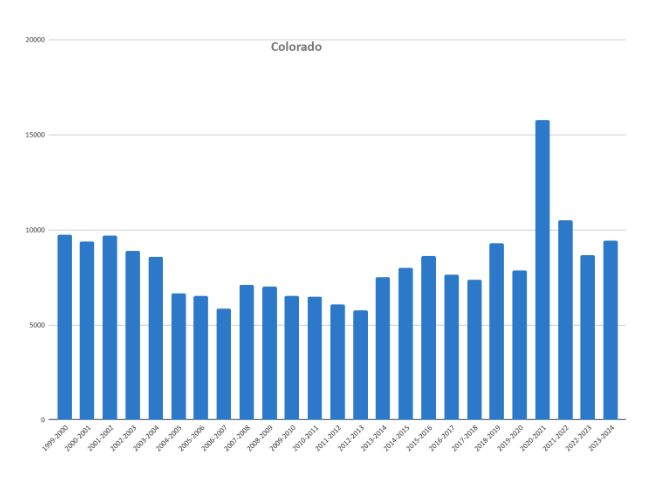Recent data shows that, in the 2023-2024 school year, homeschooling grew across the United States. While the exact reason for this growth is unknown, we do know that it was not driven by the pandemic or a sudden disruption to traditional schooling.
By Angela R. Watson, September 2024
New Mexico is the latest in a long list of states — nineteen to be exact — to report increases in homeschooling. Our Homeschool Research Lab has been collecting data from state departments of education for months, and so far, twenty-one states have reported homeschool participation for 2023-2024. Of those, only two show a decline; that’s 90% of reporting states with increases for the 2023-2024 school year. In some cases, the increases are small (for example, a 2% increase in Georgia), and in some cases, they are large (for example, a 29% increase in Delaware).

Which States Report
Twenty states either do not collect or do not report homeschool participation data, and we know little about trends in those states. The other thirty states do collect and report, and we have reports from twenty-one states so far and expect the other nine to report over the next few months. Of those twenty-one states, nineteen reported an increase, but the patterns of those increases are most interesting.
Expectations vs. Reality
While homeschooling grew rapidly during the pandemic, most people thought that students would return to more traditional schools when the pandemic disruptions abated. Some states did show a decline, but few have returned to normal, even four years after the onset of the pandemic. What we see with the most recent increases in state-reported homeschool participation is something new — these numbers are not driven by the pandemic.
New Hampshire, one of the two states showing a decline in 2023, is an excellent example of what we thought would most likely happen to pandemic-driven homeschool participation. Participation peaked at around 6,000 students in 2020-2021 and then steadily declined over the next few years to pre-pandemic (and lower in the case of New Hampshire) levels. However, insider reports indicate that the decline in New Hampshire is likely related to the state’s Education Freedom Account (EFA) and how homeschool students who receive public funding are no longer counted as part of the state’s total homeschooling number. So, this decline may not truly reflect a decrease in actual homeschool participation, but may be just a change in how students are counted in this state. Indeed, the EFA program was launched in 2021 and reported homeschool participation in the state has been declining since then.

Two Important Trends in the Data
Regardless of the case with New Hampshire, here are the patterns we see in the 2023-2024 growth in other states. There are two primary trends, and we call them continued and rebounding growth.
There are three states with continued growth, meaning that there was no post-pandemic decline. Louisiana is an example. South Carolina and South Dakota also show similar trends.

The other sixteen states show a rebounding trend, meaning that there was a post-pandemic decline, in some cases several years of a decline, and then, in 2023-2024, the number of homeschoolers increased again. The charts for Arkansas and Colorado show a couple of variations of this trend.


Finally, within these groups, a couple of states report the highest-ever number of homeschoolers. These include the continuous growth states and North Dakota, a rebounding state that reported a record number of homeschooled students in 2023-2024 and a 24% increase over the prior year. Wyoming also hit an all-time high with an 8% increase over the prior year.
Who Is Counted
It is important to understand what these numbers are and who they include. These are state-registered homeschool participation counts collected by the local districts (in most cases) and issued by the state. They count the families who report their homeschool participation to the state. While reporting is required in these states, there is no guarantee that all homeschool families report. It is also doubtful that someone would report that they homeschool when they attend a traditional school. Therefore, we consider these counts as the minimum number of homeschooled students in a state. These numbers also often include (it varies by state) many students attending microschools, hybrid schools, and learning cooperatives — homeschool adjacent models that look much like traditional schools but may be legally counted as homeschool. In states where homeschoolers are eligible to receive public funding, it is unclear if these students are counted in the same way, as in the case of New Hampshire.
What We Can Conclude
While there is a clear growth trend in homeschooling, the reason for that growth is unknown. What is clear is that this time, the growth is not driven by a global pandemic or sudden disruptions to traditional schooling. Something else is driving this growth. Also, it is important to note that these are counts of homeschooled students, not percentages. So the increase is even more interesting because the overall number of U.S. students is declining due in part to declining birth rates. In other words, ultimately we see that the number of homeschooled students is going up as the total number of U.S. students in going down.
Data collection is ongoing and we will publish new results as they become available; last updated September 2024.